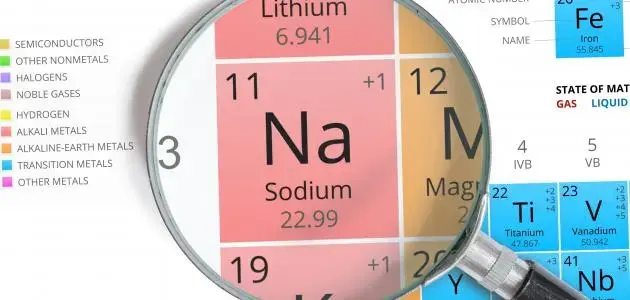Sodium is a soft, silvery-white metal from the first group of the periodic table. If you’ve ever seen it react with water, you know it’s pretty intense—it sparks up a bright yellow flame! On its own, sodium is toxic and super reactive, which is why it’s never found in nature as a free element. It reacts immediately with air or moisture, sometimes even exploding and forming sodium hydroxide in the process. Believe it or not, sodium is actually the sixth most common element on Earth—right after oxygen, silicon, aluminum, iron, and calcium.
What Makes Sodium Unique
Sodium is a metal, and its atoms have free-moving electrons, which is why it can easily lose one and become a positively charged ion. These ions can pack tightly together to form solid metallic structures.
What Happens When Sodium Meets Water
When sodium reacts with water, it produces sodium hydroxide, hydrogen gas, and a whole lot of heat. The more sodium you use, the more heat is generated—sometimes enough to melt the rest of the metal! In some cases, the heat makes the sodium boil, speeding up the reaction even more. That leads to the hydrogen gas catching fire and causing an explosion, which then boosts the temperature again and sets off the rest of the sodium in a chain reaction. That’s why sodium has to be handled with care—it can go from calm to chaos real quick.
Common Uses of Sodium
- Table salt (sodium chloride - NaCl): We all use it in our food, and our bodies need a small amount of it to function properly.
- Sodium bicarbonate (baking soda): Found in kitchens and used in cleaning too.
- In cleaning products: Many detergents and soaps contain sodium compounds.
- Gold purification: Sodium cyanide is used in the process.
- Nuclear reactors: Liquid sodium is used to cool them down.
- Street lighting: Sodium vapor lamps light up roads at night.
- Chemical manufacturing: Used to make things like sodium cyanide, sodium peroxide, and sodium hydride.
- Mining: Helps extract metals like titanium from their ores.
How Sodium Is Stored Safely
Because sodium reacts so quickly with air and moisture, it needs to be stored in a sealed, isolated environment. The typical method is to place it in dark glass containers filled with kerosene or mineral oil. These liquids keep sodium stable and safe for years.
Each container is labeled with the name of the substance and the date it was stored. Then, it's placed inside a strong plastic bag, which is sealed tightly. This extra layer helps prevent accidents—if the container breaks, the sodium is still safely inside the bag.
The whole package is kept in a cabinet, away from sunlight, heat sources, or anything flammable. It’s also a good idea to put a warning label on the outside of the cabinet so no one accidentally opens it or messes with it.
Leave a comment
Your email address will not be published. Required fields are marked *




